This post may contain affiliate links. If you use these links to buy something we may earn a commission. Thanks.
While many fast-growing and wind-resistant trees tolerate forceful gusts, the question is, will they be good windbreakers for the season you need them to be? Evergreen trees and shrubs generally make the best windbreakers because they don’t lose their leaves.
As you can see below, the lakeshore waterline we live by completely consists of evergreens! It has pines, cedars, spruce, and firs. Our piece has cedars.
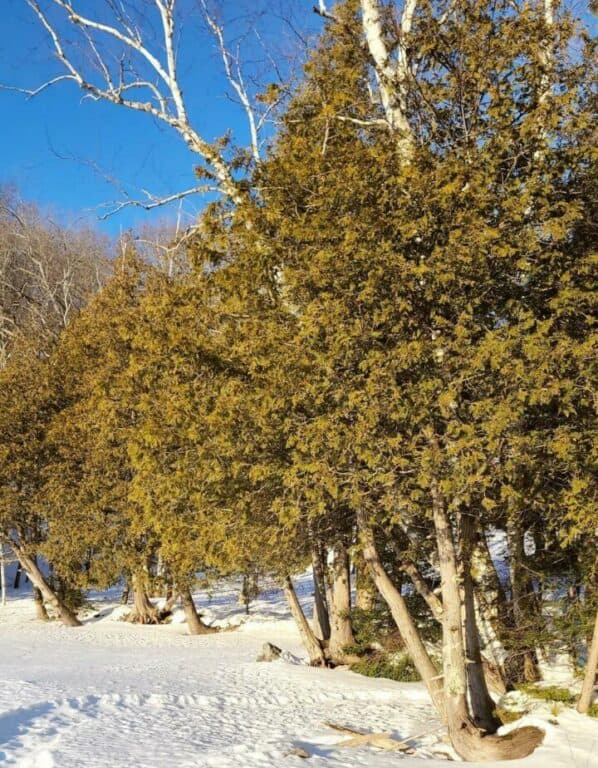
Their permanent foliage slows wind speeds and protects the bare deciduous trees from the damaging cold winter winds.
Related post: Forest Garden Design for Wind Protection in Cold Climates (Includes: design examples for windbreak and shelterbelt layouts, which way to orient your windbreaks, and the importance of plant spacing)
What Tree is the best windbreak?
There is no one tree that makes the best wind break for every place.
Trees with characteristics such as; evergreen foliage, a fast growth habit, broad leaves, cold hardiness, a narrower spread, disease resistance, and a deep, robust root system make the best windbreak. These features cover all the bases around longevity and functionality. A good windbreak tree considers not only fixing the windy environment but the tree that will thrive successfully with a long life.
Evergreen foliage provides shelter to the same degree all year round. They also like the breeze because they dislike humidity. The foliage design of conifers allows humidity to escape, unlike deciduous canopies. Deciduous canopies create a bubble that traps humidity from evaporating. This is evidence that they aren’t ideal for wanting to manage winds, rather they want to manage a protected microclimate.
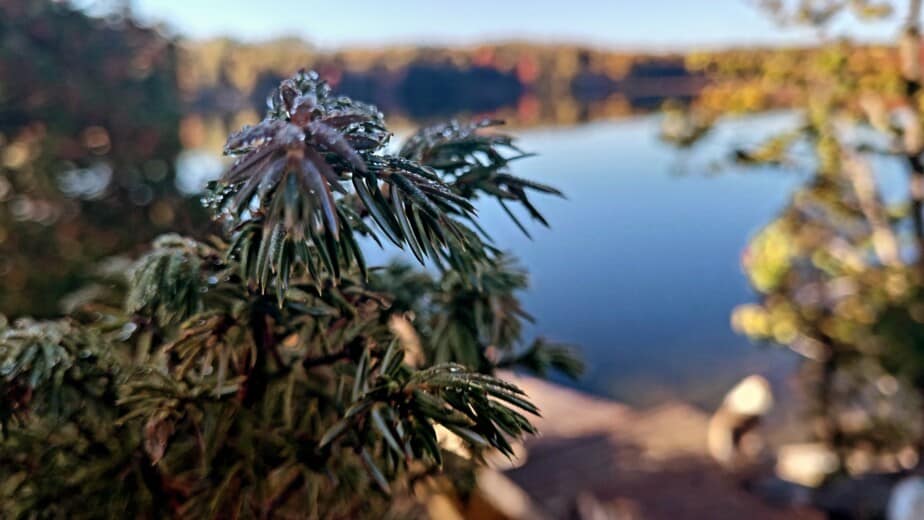
Fast-growing wind-resistant trees mean your windbreak will do its job quicker and can be replenished and replaced easily over time. Not all the strongest windbreak trees are fast-growers! Planting a fast-growing row with a staggered slow-growing row will increase the longevity and strength of your windbreak or shelterbelt. Different heights can also be beneficial.
Broad leaves are denser and slow the wind better than thin foliage. Choosing a mix of both foliage types makes for a great strategy too. For example, a zone 7-9 area could plant a fast-growing pine on the outside row to slow the first winds. Its thin foliage will allow the plant to be less stressed in strong winds than a dense-foliage plant. The second row could be a tall and more dense-leaved evergreen such as; Thuja Green Giant. Its denser growth and bulkier leaves will further slow the already somewhat slowed wind providing great results for you and faster growth for your young, soon-to-be-tall, and dense Thuja Green Giant.
Cold hardiness to your zone ensures the trees you choose will be resilient to climatic extremes and unpredictable climate changes.
A narrower tree spread means you’re less likely to have limbs break and blow through heavy storms. The shorter pencil is always harder to break!
Disease resistance ensures your investment will last longer! You can combine a diverse range of varieties to minimize the damage that can be caused by disease in a given plant type. Ask your local tree nurseries which windbreak trees are resistant to disease, soil issues, and insect problems for your particular area.
A deep, robust root system will be encouraged in any tree that experiences harsh winds, but it’s a good idea to pick a tree that naturally has this feature! Trees that already like to grow deep roots systems would be the most suitable species for the environment you’ll be planting them in.
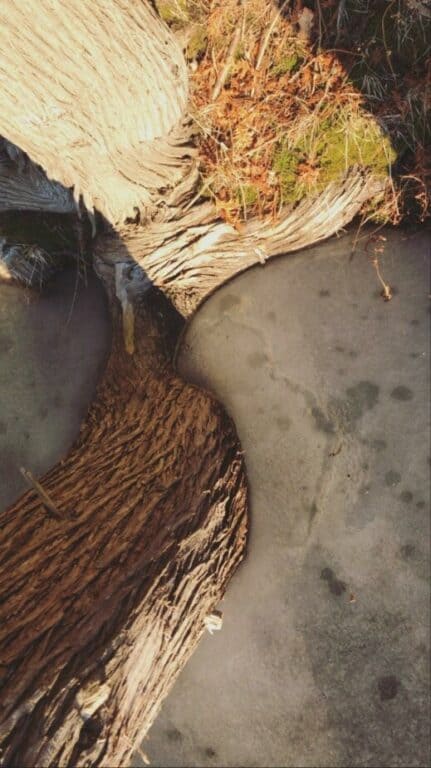
These features make a great base for a windbreak arrangement but aren’t necessarily the only trees that will work well. At the end of the day, planting a variety is better than a mono-crop of the “best tree.” Diversity makes strength because it includes different benefits of more offers.
Best evergreen trees for windbreak
The best evergreen trees for windbreak will have many of the above features. However, not every tree needs every feature. The best evergreen trees for windbreak will make the most sense for you, your area, and your zone.
You may like the look or other benefits of certain trees over others. Your area might be prone to certain pests and diseases.
Pine trees grow in zones 2-9, grow fast in general, can become very tall over 100ft after decades, and withstand winds well as air passes through their thin needles. Their spread can be 20-40ft.
Cedars love to hug the land in place along moist areas such as lakeside, they can grow pretty slow but depends on the variety your choose. They are very strong and dense trees that can become over 100ft in height with a 20-40ft spread after decades. They tend to lose foliage on their lower branches, and eventually the whole branch. Cedars thrive in zones 5-8, some varieties can tolerate down to zone 2.
Cypress trees have a medium growth rate in general, and can grow up to 80ft depending on the variety with a typical spread of 20-30ft when very mature. Cypress is hardy to many climates and grows well in zones 4-10.
Arborvitaes can range from slow to fast growth and prefer zones 2-7. Their height ranges between 40-60ft with a spread of 10-15ft. These are very popular choices for windbreaks
Spruces prefer zones 2-6 and have a medium growth rate. They can grow up to very large heights between 50-200ft after decades of maturity with a 10-30ft spread.

Best evergreen hedge for windbreak
There is no one shrub that makes the best windbreak for every place.
Shrubs or trees with characteristics such as; evergreen foliage, a medium growth habit, broad leaves, appropriate hardiness, disease resistance, and a long lifespan make the best windbreak hedge. These features cover all the bases around longevity and functionality. A good windbreak hedge considers not only fixing the windy environment but the shrub that will thrive successfully with a long life.
Evergreen foliage provides year-round privacy and wind blockage. At least a medium-growth habit will fill in your space quicker. Broad leaves will do a better job of slowing wind speeds. Appropriately hardy shrubs for your area will ensure that your hedge won’t be affected by climate change anytime soon. A mix of disease-resistant varieties for your area will ensure your investment doesn’t suddenly die all at once. Shrubs with a long lifespan will provide protection for the longest time without the need for replacement.
In general, most broad-leaved evergreen shrubs are slower at growing.
Boxwoods are a popular broad-leaved choice although slow at growing. Their height and spread are 6ft and like to grow in zones 5-9.
Walter viburnum is a smaller evergreen tree that makes a great hedge. Up to 20ft in height with a 6-12ft spread, they grow in zones 7-10. Their leaves are dark and leathery to the touch and produce fragrant flowers.
Podocarpus grows in zones 8-11. Their mature height is 30-40ft with a spread of 20-25ft and is compact, and dense evergreens. They typically grow 1-3ft per year so they would take 10-30 years to grow to maturity.
Oakleaf holly is a broad-leaved evergreen their leaves are “oak leaf” shaped hence the name! They mature around 20ft in height with an 8 ft spread. Slower to grow at one foot per year, it is a very tough plant that likes growing in zones 6-9.
Needlepoint holly on the other hand is a fast-growing broad-leaved evergreen. Typically matures around 15ft in height with a spread of 10ft. The needlepoint holly grows in zones 7-9.
Abelia Edward Goucher grows at a medium rate in zones 6-9. Broad and semi-evergreen leaves are a darker background to gorgeous bright flowers. They grow up to 6ft with a spread of 7ft.
Junipers grow down to zone 2 and up to zone 9. They spread 6-8ft and can range between all heights from shrub to tree.
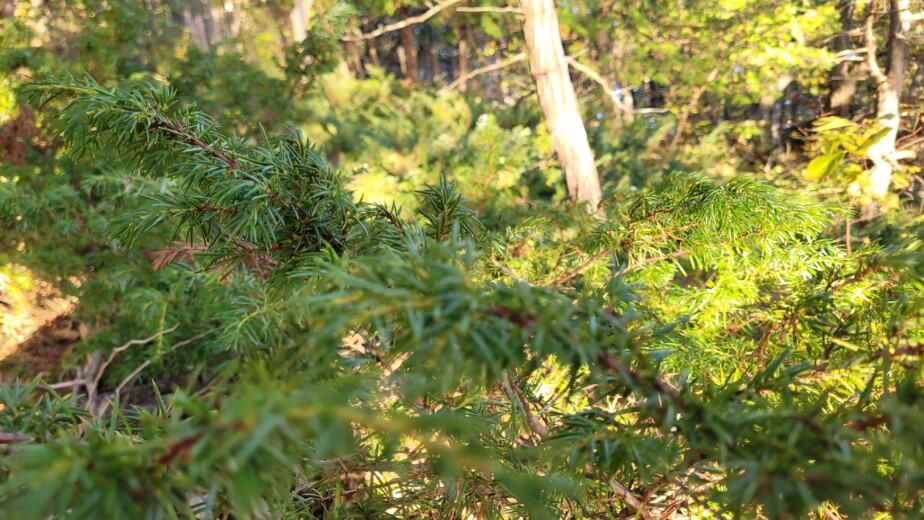
Related post: Zone 2 Forest Garden Full Plant List (Sorted By Layer)
The exact growth rate, leaf type, height, spread, and lifespan depend on the variety you choose of the species.
How to choose the best windbreak trees for you
To choose the best windbreak combination we’d be best off observing our environment. What good wind blockers grow natively nearby?
By choosing what already grows natively we’ll be helping our local wildlife thrive thereby supporting diversity.
Perhaps you could add to the native diversity if all you see is one type of tree around town!
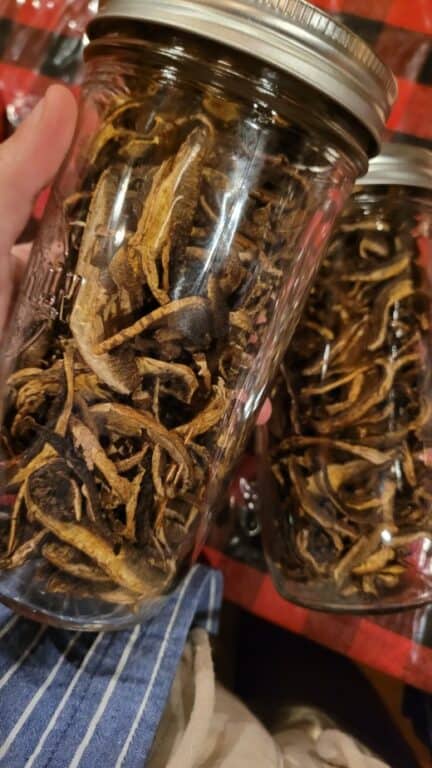
Or you can select what to grow based on the environment you might want to create.
- Want to attract certain birds? Get fruiting shrubs or trees like hollies!
- Want to be a crafty basket or wreath maker? Get a specific variety of willow!
- Want to create an environment for edible mushrooms? Get pines for bolete mushrooms or house your own mushroom logs.
- Want medicinal trees for healthy teas? Spruces have edible needles and eastern white cedars have edible bark!
- Want pistachio-sized pine nuts in a decade’s time? Find yourself the Korean pine from Hardy Fruit Trees
If you are unsure what to choose, your local nursery will have the necessary details and suitable trees and shrubs for your needs!
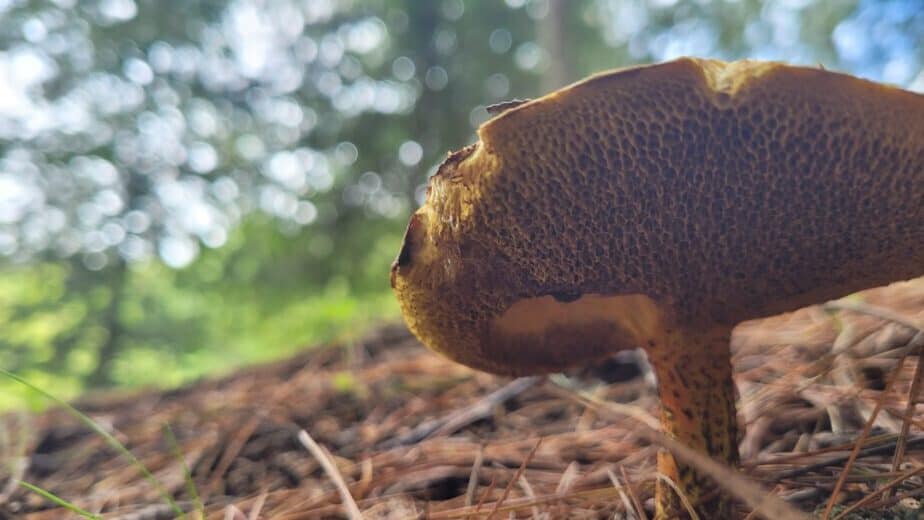
This article was originally published on foodforestliving.com. If it is now published on any other site, it was done without permission from the copyright owner.
Recent Posts
There’s no shortage of full-sun ground covers for zone 4 climates! Each plant in this list can withstand the frigid temperatures and also enjoy the hot sun in summer. Full sun means that a plant...
There's no shortage of full sun ground covers, not even in zone 3! Zone 3 climates offer hot but short-lived summers and very cold winters. So each plant in this list can withstand the frigid...
